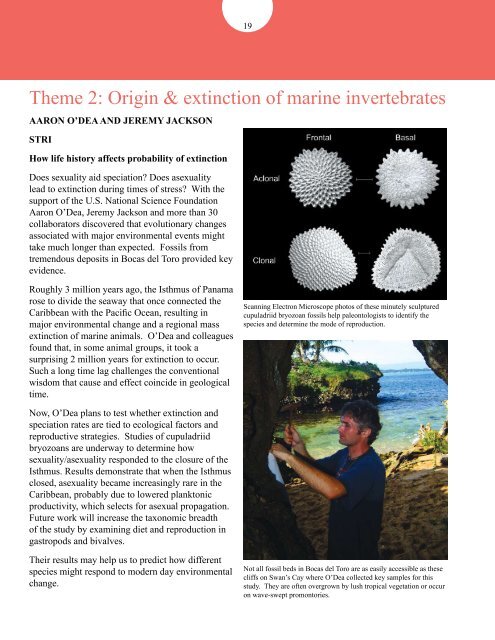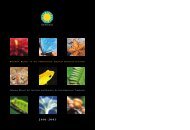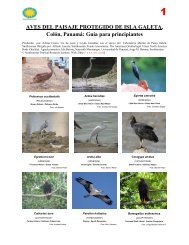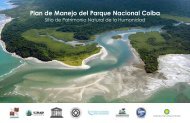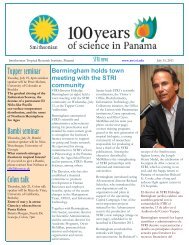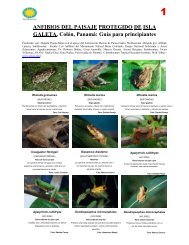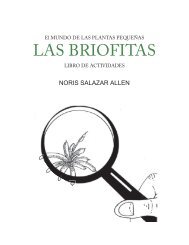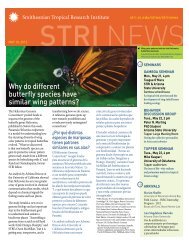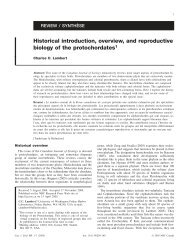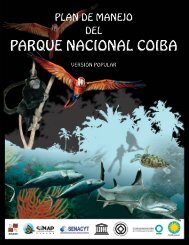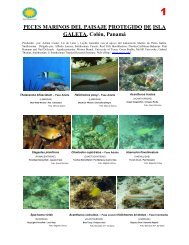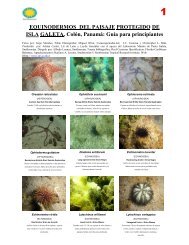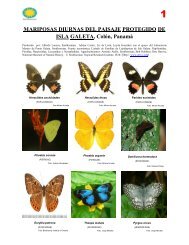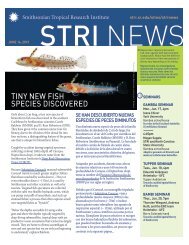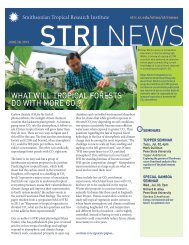Bocas del Toro Research Station - Smithsonian Tropical Research ...
Bocas del Toro Research Station - Smithsonian Tropical Research ...
Bocas del Toro Research Station - Smithsonian Tropical Research ...
You also want an ePaper? Increase the reach of your titles
YUMPU automatically turns print PDFs into web optimized ePapers that Google loves.
Theme 2: Origin & extinction of marine invertebrates<br />
AARON O’DEA AND JEREMY JACKSON<br />
STRI<br />
How life history affects probability of extinction<br />
Does sexuality aid speciation? Does asexuality<br />
lead to extinction during times of stress? With the<br />
support of the U.S. National Science Foundation<br />
Aaron O’Dea, Jeremy Jackson and more than 30<br />
collaborators discovered that evolutionary changes<br />
associated with major environmental events might<br />
take much longer than expected. Fossils from<br />
tremendous deposits in <strong>Bocas</strong> <strong>del</strong> <strong>Toro</strong> provided key<br />
evidence.<br />
Roughly 3 million years ago, the Isthmus of Panama<br />
rose to divide the seaway that once connected the<br />
Caribbean with the Pacific Ocean, resulting in<br />
major environmental change and a regional mass<br />
extinction of marine animals. O’Dea and colleagues<br />
found that, in some animal groups, it took a<br />
surprising 2 million years for extinction to occur.<br />
Such a long time lag challenges the conventional<br />
wisdom that cause and effect coincide in geological<br />
time.<br />
Now, O’Dea plans to test whether extinction and<br />
speciation rates are tied to ecological factors and<br />
reproductive strategies. Studies of cupuladriid<br />
bryozoans are underway to determine how<br />
sexuality/asexuality responded to the closure of the<br />
Isthmus. Results demonstrate that when the Isthmus<br />
closed, asexuality became increasingly rare in the<br />
Caribbean, probably due to lowered planktonic<br />
productivity, which selects for asexual propagation.<br />
Future work will increase the taxonomic breadth<br />
of the study by examining diet and reproduction in<br />
gastropods and bivalves.<br />
Their results may help us to predict how different<br />
species might respond to modern day environmental<br />
change.<br />
19<br />
Scanning Electron Microscope photos of these minutely sculptured<br />
cupuladriid bryozoan fossils help paleontologists to identify the<br />
species and determine the mode of reproduction.<br />
Not all fossil beds in <strong>Bocas</strong> <strong>del</strong> <strong>Toro</strong> are as easily accessible as these<br />
cliffs on Swan’s Cay where O’Dea collected key samples for this<br />
study. They are often overgrown by lush tropical vegetation or occur<br />
on wave-swept promontories.


